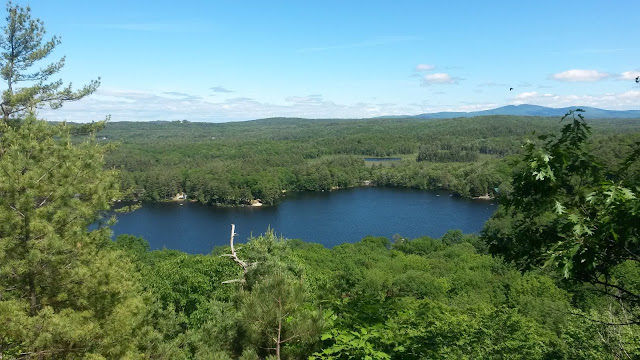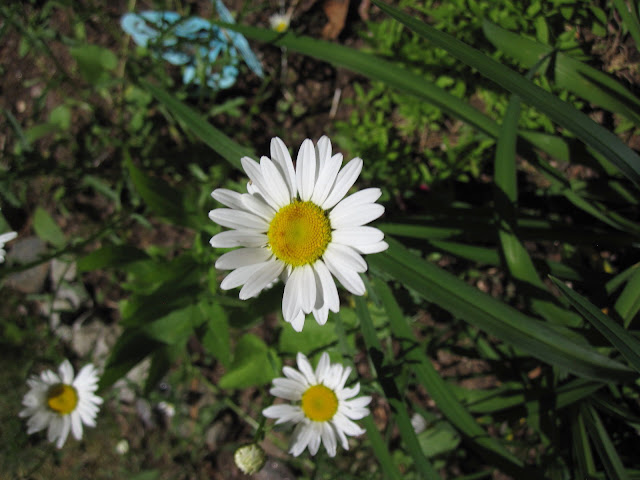 |
| Crockett's Ledge is back in full summer dress (that's not a speck of dust in the sky - it's a broad-winged hawk) |
Of course that doesn't mean everything is summer-like. The 80 degree temperatures and warm lake of last week have regressed - it was back into the 40's overnight with day-time highs only in the 50's. We were even treated to a little taste of frozen precipitation one day.
 |
| An early summer hailstorm |
The fresh green leaves provide sustenance and homes for a wide range of animals, including some that are well adapted to take advantage of what the trees can provide. I saw these interesting curved spikes in large numbers jutting out of the leaves of a Witch Hazel tree and wondered what they were.
 |
| Witch Hazel Horn Galls |
I had no idea that they were the homes of tiny aphids (Hormaphis hamamelidis), and are known as horn galls. I have previously noted Oak Galls which are those round balls one often finds on the forest floor and are caused by Oak Apple Gall Wasp, but I didn't recognize these as the same kind of growth. Here is a great description of the life process of this aphid by Walter Reeves:
In early spring aphid females hatch from over-wintered eggs and crawl onto the leaf buds. As the leaves begin to expand the aphids inject chemicals into the leaf tissue which causes a hollow, cone-shaped gall to form. Aphids live inside the gall, protected from predators and the elements, until they mature. Three generations occur in a season but only the third includes both male and female aphids. In late summer the final generation lays eggs on the branches of the witchhazel plant. The following spring the cycle begins again. [Ref: The Georgia Gardener, http://www.walterreeves.com/landscaping/galls/]
The spring flowers are fading fast; I saw one lone, faded Lady's Slipper up on the ridge west of the lake, its life extended by a bit higher altitude and the week's cool weather. But the early summer flowers are happy to take their place in nature's gallery.
 |
| Lupine beside the lake |
 |
| Tiger Swallow Tail on a Rhododendron Blossom |
 |
| Large Blue Flags blooming in wetlands |
 |
| Oxeye Daisy in a garden |
Although the forest canopy is full, allowing little penetrating light, there was one beam of sunshine finding its way through, perfectly illuminating this spider web right beside the trail.
 |
| Spider web with its resident waiting right in the center for a visitor |
The owner was kind enough to build beside the trail rather than right across it so the web didn't end up on my face!
One final note: the wood ducks we were watching earlier in the season (see March 27 post) are now proud parents of a very large family of chicks! I have seen the brood of tiny fluff balls swimming across the lake twice now, but never close enough for a decent picture, and I have so far resisted the urge to go out and chase them down!
 |
| Wood Duck Brood |
It has been difficult to count them, but I think there are 8 to 10 chicks, which is good, because they look like easy targets for that big snapper I saw last week - or a large mouth bass
The loons are not doing as well with their family life. There are still two pairs on the lake and they are not getting along well, watching each other by day and having loud disagreements over who owns this lake at night. Neither pair appears to be comfortable enough to try to nest. We do have confirmation now that one of the loons is the banded female that has been on Lake Wicwas for several years. The one positive aspect of territorial fights is that it indicates the overall population of loons is growing in the area. I'll keep you posted on any progress towards homesteading.

No comments:
Post a Comment